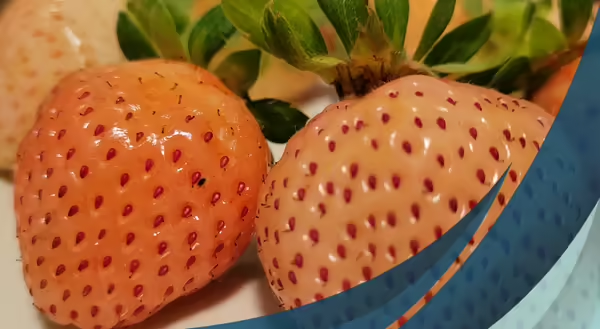
As spring planting begins and we look forward to the harvests of our labors, one of the best summer treats are strawberries. Depending on cultivar planted, June-bearing provide a large crop of larger strawberries and everbearing strawberries produce smaller berries throughout the growing season. Strawberries that range in color from common red to purple, yellow, or white, with varying flavors. Pineberries are descended from native North American strawberries.
Introduced commercially to the United States in 2012, pineberries are hybrid, everbearing, white to pink strawberries with red seeds, and they have a flavor and aroma of pineapple, though not everyone can taste it. Pineberries are not self-fertile, meaning they require a second cultivar to cross-pollinate. One pollinator strawberry is necessary for every four pineberries. Purchase pineberries in the spring as transplants, as they are hybrids and the seeds will not grow true to type.
Planting Pineberries
When planting pineberries, start with a weed-free, well-drained site in full sun. Plant them one foot apart within the row and mulch with 4-6 inches of weed-free straw. Straw will have multiple benefits for your pineberries: it will suppress weed growth, retain moisture, and hold heat protecting the berries during the winter. During the first year of planting, remove the first flush of blossoms. This will redistribute the nutrients back into the plant allowing it to better establish for years to come. With being everbearing, the next flush of blossoms during the season will produce pineberries.
Pineberries are smaller than strawberries, about an inch in diameter, depending on cultivar. Cultivars available in the United States are White Pine, White D, White Albino, White Carolina, Wonderful, and Natural Albino®. Pineberries are hardy in zones 5-8 and have management similar to other everbearing strawberries. It is recommended that everbearing plants are planted in a hill system. In the hill system, cut off runners as they appear, which allows all of the energy to remain in the mother plant. If allowed to produce runners, flowering and fruiting are halted and energy will not stay in the crown of the plant, compromising winter hardiness. Everbearing strawberries, including pineberries, have the ability to produce berries until frost. They are suitable for in-ground, raised bed, or container planting.
Pineberries turn green to white to pink growing in sunlight, and slow down or stop producing during the intense heat of summer. Growers have reported that pineberries are a soft berry when compared to their red counterparts. Similar to strawberries, pineberries have disease and insect issues. Pineberries may have issues with leaf spot, leaf scorch, red stele, black root rot, anthracnose, gray mold, viruses, tarnished plant bugs, spider mites, aphids, leafrollers, slugs, nematodes, and strawberry weevils.
Until recently they were a niche fruit that could be found at farmer’s markets or regionally across the United States. In 2020, an increase in commercial production has led them to be found at local grocery stores in Northern Illinois. As a niche fruit they do cost more than the red strawberries.
For any questions about what is happening in your yard or your plants, contact your local Extension office to speak with the Illinois Master Gardener Help Desk or Extension staff for research-based solutions to your questions.
About the author: Bruce J. Black is the University of Illinois Extension Horticulture Educator serving Carroll, Lee, and Whiteside, & Boone, DeKalb, and Ogle counties. Black’s primary areas of expertise are in fruit and vegetable production, plant propagation, and community and youth garden education.